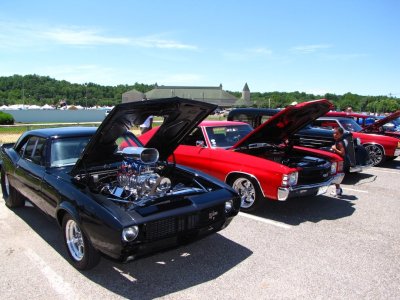When it comes to American muscle cars, two categories often come to mind: muscle cars and pony cars. While they may seem similar, there are key differences between these two types of vehicles that set them apart in terms of performance, design, and history.
First, let's define what exactly qualifies as a muscle car and a pony car. A muscle car is typically a mid-sized, rear-wheel drive vehicle with a large, powerful engine. These cars are known for their high horsepower and torque, making them ideal for drag racing and straight-line speed. Some iconic muscle cars include the Oldsmobile 442, Chevrolet Chevelle and Dodge Charger.
On the other hand, pony cars are smaller, sportier vehicles with a focus on style and agility. They often have a front-engine, rear-wheel drive layout and are designed for performance driving on both the street and the track. The Ford Mustang is considered the original pony car, but other popular models include the Chevrolet Camaro and the Dodge Challenger.
One of the main differences between muscle cars and pony cars is their size and weight. Muscle cars tend to be larger and heavier, with a bulkier frame and more powerful engines. This gives them a distinct advantage in straight-line speed and acceleration. Pony cars, on the other hand, are lighter and more nimble, making them better suited for handling and cornering.
Another notable difference is their intended purpose. Muscle cars were originally designed to appeal to the younger generation in the 1960s and 1970s who wanted a car that was both powerful and stylish. They were meant to be a symbol of freedom and rebellion, with their loud engines and flashy designs. Pony cars, on the other hand, were created as a response to muscle cars, with a focus on performance and agility rather than just raw power.
In terms of design, muscle cars and pony cars also have distinct features. Muscle cars often have a long hood and a short rear deck, giving them a more aggressive and muscular appearance. They also tend to have a more squared-off body, with sharp lines and angles. On the other hand, pony cars have a sleeker and more aerodynamic design, with a shorter hood and longer rear deck. They also have more curved and streamlined body shapes.
While both muscle cars and pony cars have their own unique characteristics, they share a common history. Both types of vehicles were born out of the American car culture of the 1960s and have become icons of the country's automotive industry. They have also both undergone significant changes over the years, with advances in technology and design influencing their evolution.
In conclusion, while muscle cars and pony cars may seem similar at first glance, they are actually quite different in terms of performance, design, and history. Whether you prefer the raw power and brute force of a muscle car or the agility and style of a pony car, there's no denying the impact these vehicles have had on the automotive world and the hearts of car enthusiasts everywhere.
Note: This article was initially published on detroitdreamer426.com, which is a project of mine.


Recommended Comments
There are no comments to display.